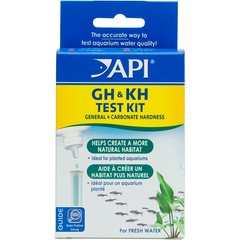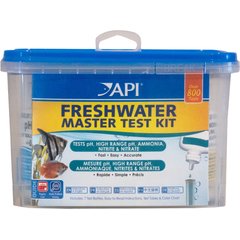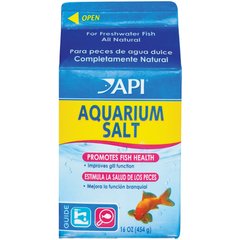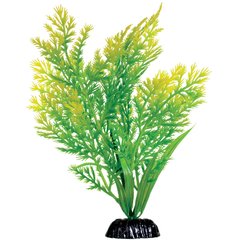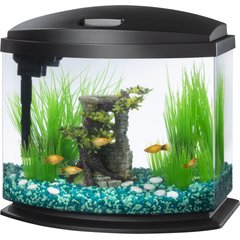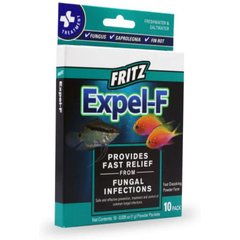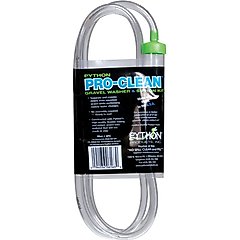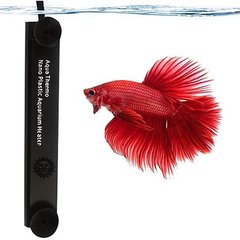Betta Fish Fin Rot: Symptoms, Causes, and Treatment
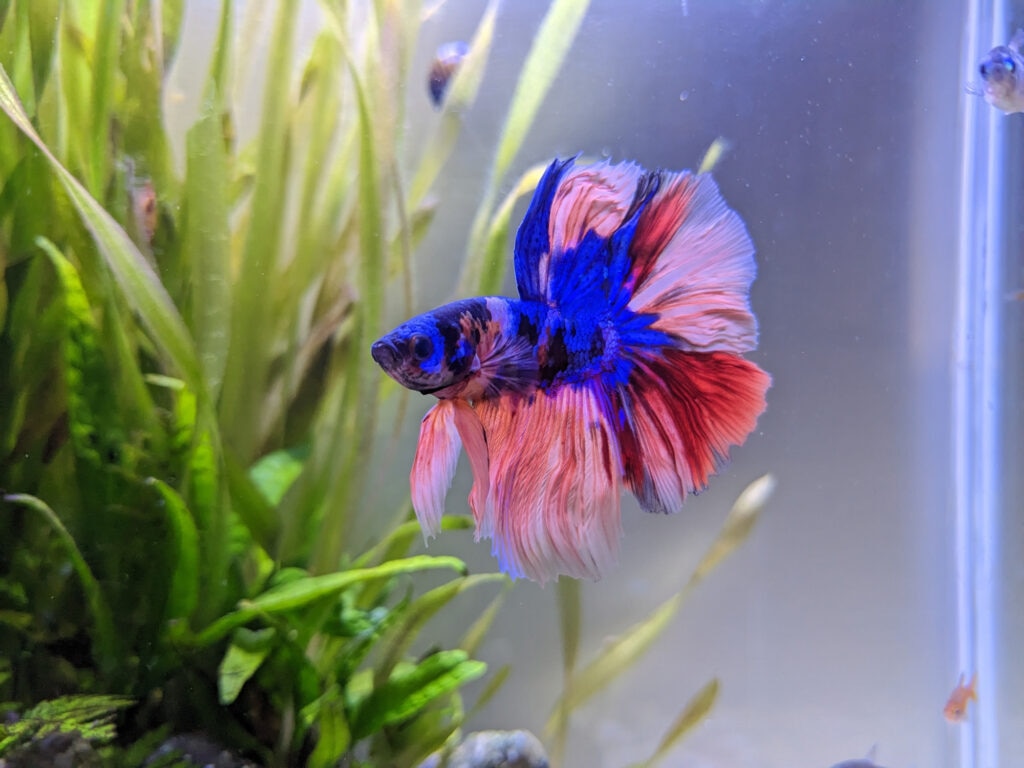
Photo by Hardiansyah/iStock/Getty Images Plus
Betta fish fin rot is one of the most common diseases that can impact your betta fish’s health, so it’s important to read up on everything you can about this well-known disease.
Bettas are particularly vulnerable to fin rot due to their long, flowing fins, which can be easily damaged (especially if decor is sharp) and are prone to infection.
Fin rot is typically associated with stress and poor water quality, which can weaken a fish’s immune defenses and allow bacteria or fungi to take hold—which is why you’ll see the fin actually deteriorating the more severe the rot.
Because of this, even experienced fish keepers may encounter fin rot if proper care routines aren’t consistently followed.
Key Takeaways
- Betta fish fin rot is a common bacterial or fungal infection that causes a betta’s fin tissue to fray or discolor.
- Stressors like poor water quality, injuries, and sudden temperature swings make fin rot more likely.
- Your betta’s fin rot treatment will depend on the severity. Treatment will range from improving water conditions to antibacterial medications.
- Prevent fin rot with steady tank care—regular water testing, gentle decor, and proper heat for tropical bettas.
What Is Betta Fish Fin Rot?
“Fin rot” is a common aquarist term for fraying, discoloration, or erosion of a fish’s fins that’s usually driven by a bacterium or a fungus attacking already damaged tissue.
These infections take advantage of stress—think poor water quality, overcrowding, or water temperature swings.
According to the Merck Veterinary Manual, bacterial outbreaks in aquarium fish are strongly tied to stressors like improper handling, low oxygen, and water quality problems.
Betta fish are especially at risk because their delicate fins offer more surface area for infection.
Stages of Fin Rot
There are three stages of fin rot in a betta fish:
- Mild: Early disease may cause slight fraying, discoloration, or transparency at the outer edges of the fins. This stage can easily go unnoticed by a fish owner due to how subtle the signs appear.
- Moderate: Fins show visible tearing or holes, often with red, brown, or black edging.
- Severe: When a betta fish reaches severe fin rot, the disease has progressed deep into the fin base or even reached the body. Ulcers may appear, and the fish may begin to show signs of systemic illness, such as lethargy, and is less likely to eat.
What Causes Fin Rot in Bettas?
Fin rot usually traces back to tank conditions and stress. Common triggers include:
- Poor water quality (ammonia or high nitrate present)
- Temperature swings or a tank that’s too cool for tropical bettas
- Fin injuries from sharp decor or nippy tank mates
- Overcrowding
- Stress
- Ammonia can damage gills which leads to stress, this increases their susceptibility to bacterial infections
- Low-quality nutrition or an imbalanced diet
Betta Fin Rot Symptoms
Spotting changes early gives your betta the best chance to bounce back. Watch for:
- Frayed and/or ragged fins
- Fins appearing shorter or uneven due to tissue loss
- Discoloration at the edges—brown, red, black, or white
- White fuzz or mucus-like film on affected areas (especially if fungal)
- Clamped fins
- Hiding
- Sluggish swimming
- Reduced appetite
If you notice any signs of fin rot, contact your veterinarian to determine a treatment plan.
Betta Fin Rot Diagnosis
Most fin rot is diagnosed by appearance and by ruling in the underlying stressors. A fish-savvy veterinarian or experienced aquarist will:
- Review water-testing results (ammonia, nitrite, nitrate, pH, temperature)
- Assess husbandry (tank size, filtration, maintenance schedule, tank mates)
- Examine a swab or wet mount (a sample of water is examined under a microscope to determine if bacteria or fungus may be present) from affected fins in tough cases
Because many cases of fin rot stem from environmental issues, checking the tank’s conditions is a critical step in confirming the diagnosis and guiding treatment.
Betta Fin Rot Treatment Step by Step
Betta fin rot treatment will depend on the fin rot stage and the severity. Your vet will most likely recommend addressing stress first—many mild cases improve once the environment is corrected.
Always follow product labels and if your vet prescribes a medication, follow their instructions.
For mild fin rot treatment your vet may recommend to:
- Perform small, frequent water changes every two to three days. You can purchase a fish tank water test kit to help perform this function.
Recommended Products
- Add aquarium salt to help reduce bacteria and promote healing for your betta fish
Recommended Product
- Remove any sharp decorations and replace with safer options
Recommended Products
For moderate fin rot, your vet may recommend to:
- Continue frequent water changes and test quality
- Move your betta fish to a smaller hospital tank to reduce stress and allow closer monitoring during their recovery.
- A hospital tank refers to a smaller tank that can be used to separate a sick fish from their community tank, so that they can treated separately without treating the entire tank. A separate tank, like the Aqueon LED MiniBowSmartClean Fish Aquarium, can be used.
Recommended Product
- Use an antibacterial medication, such as API Bettafix Antibacterial & Antifungal Betta Fish Infection Remedy, which will help to clear the infection quicker.
Recommended Product
When dealing with severe fin rot in your betta, your vet may recommend to:
- Start a stronger medication, such as Fritz Expel-F, which is a fast-acting fungal treatment for fish when fin rot is caused by a fungal infection.
Recommended Product
- Monitor for secondary issues, such as dropsy or ulcer development.
Important: Remove activated carbon from the filter before starting treatment, as it can absorb medications. Always follow medication instructions carefully to avoid overdosing.
How To Prevent Betta Fin Rot
Preventing fin rot is about setting up an ideal tank and maintaining a clean, safe, and low-stress environment for your betta. Here’s how to stay ahead of the issue:
- Tank hygiene: Perform weekly water changes. Use a gravel washer and siphon, like the Python Pro-Clean Gravel Washer & Siphon Kit, to help remove waste.
Recommended Product
- Water quality testing: Regularly monitor ammonia, nitrites, nitrates, and pH using aquarium test kits.
- Temperature control: Keep the tank between 76 F to 81 F (24 C to 27 C) using an aquarium heater like the SunGrow Betta Submersible Aquarium Tank Water Heater. Steady temps allow for low stress, which helps to create a better immune system and in return better resistance against diseases like fin rot.
Recommended Product
- Avoid fin injuries: Use smooth betta fish decorations like the Betta Fish Hideout Cave or Conifer Fish Plant, and choose tank mates wisely when placing other types of fish with your betta.
Recommended Products
- Quarantine new arrivals: Isolate new fish or live plants for at least two weeks before adding them to the tank. Betta fish are semi-peaceful when it comes to living with other fish species in larger tanks—but monitor them closely.
- Nutrition: Feed a variety of high-protein betta pellets, like API Floating Pellet Betta Fish Food and worms like tubifex or blackworms.
Recommended Product
These steps not only help prevent fin rot but also promote overall well-being in your betta.
FAQs About Betta Fin Rot
How do you treat fin rot on betta fish?
Treatment will depend on the fin rot stage and the severity for your specific betta. Treatment for betta fish fin rot varies and may include improving water quality, removing any decor that is too sharp, or administering medication for more severe cases.
Will fin rot cure itself?
No. Without intervention, including changing water quality, fin rot will likely worsen and may lead to more health issues and/or worse infection.
How do you tell if betta fin rot is healing?
Look for clean, clear edges at the fins and gradual regrowth of missing tissue. Your betta should also become more active and show renewed interest in food if one of their signs was lack of appetite.
What does early fin rot look like?
Fins may look slightly uneven or frayed at the tips, with subtle discoloration—often the first visual clue something is wrong.
Attributions
This article was created with assistance from AI tools. The content has been reviewed for accuracy and edited by a human.
